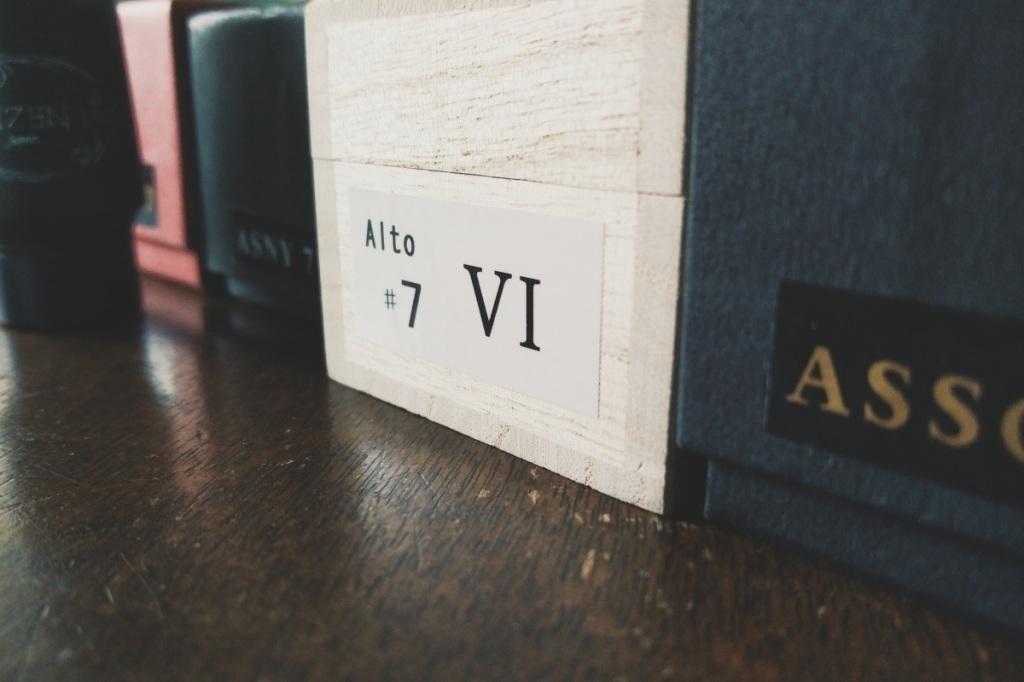It’s that time of the year when I am trying a couple of mouthpieces for the alto again. I grew a bit tired off my Meyer #8 which I have used now for about 3 years and it was time for a change. The mouthpiece simply doesn’t have the qualities that I was looking for and now I was starting to look for something new and, most importantly, different.

A couple of emails and a few days later I received a bunch of new mouthpieces and was ready to give them a try. When facing a table of full of mouthpieces it is easy to get lost and I wanted to make sure to make the best decision possible.
When trying out mouthpieces I have developed the following routine. These are of course only my two cents, but I found these helpful:
- In the beginning try to use the same reed on all mouthpieces. Adding another variable by using a different reed I found not helpful (it might be though necessary if the new mouthpiece has a larger or small opening). Once you have singled out one or two models that you like, try to find reeds that suit these ones the best.
- Don’t settle for the first one you like. If you try multiple mouthpieces and you choose the first one you like, the one that feels right, it might be that it is just very similar to the one you are already using. Which would be fine if you look for the same, but not if you want something fresh, new, different or looking for other qualities.
- Use the same ligature. Ligatures affect playing and sound, so if possible stick to the same (see #1).
- Make sure it plays freely and well over the whole range of the horn. Sounding and playing great in the middle register is easy, but how do the extremes work: The lower register? The palm-keys? How’s the articulation, the dynamics?
- If possible record yourself. Generally a good idea, but especially in this situation.
- Try it in different playing situations. Do you play in a Big Band, or in a horn section? Try it there! You play combo? Try it in a rehearsal!
- If possible take your time and try over a series of days. I know this is not always possible, but extremely helpful. A little distance and trying over the course of a couple of days helps to be a little more objective.
- Use your own instrument. This should be no-brainer, but I’m just bringing it up.
Your mileage may vary but I found this routine rather helpful. I related new: I alos wrote this list also to remind myself to not make too quick decisions.
Bonus tip: Don’t buy if you are not 100% satisfied. Nothing is worse that settling with an ‘okay, this will do’, and then being not happy with every time you play.
Posted in: Article • Saxophone